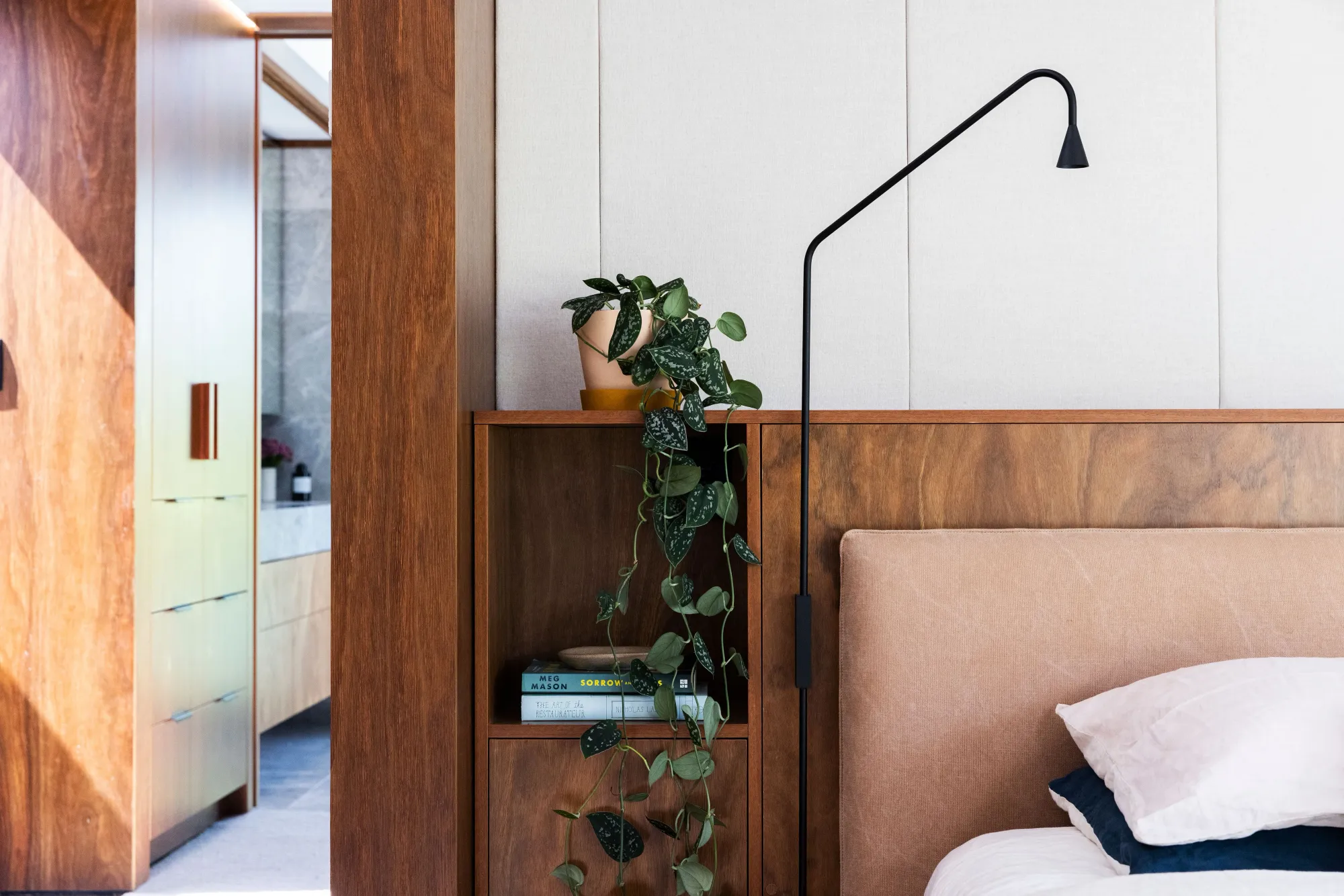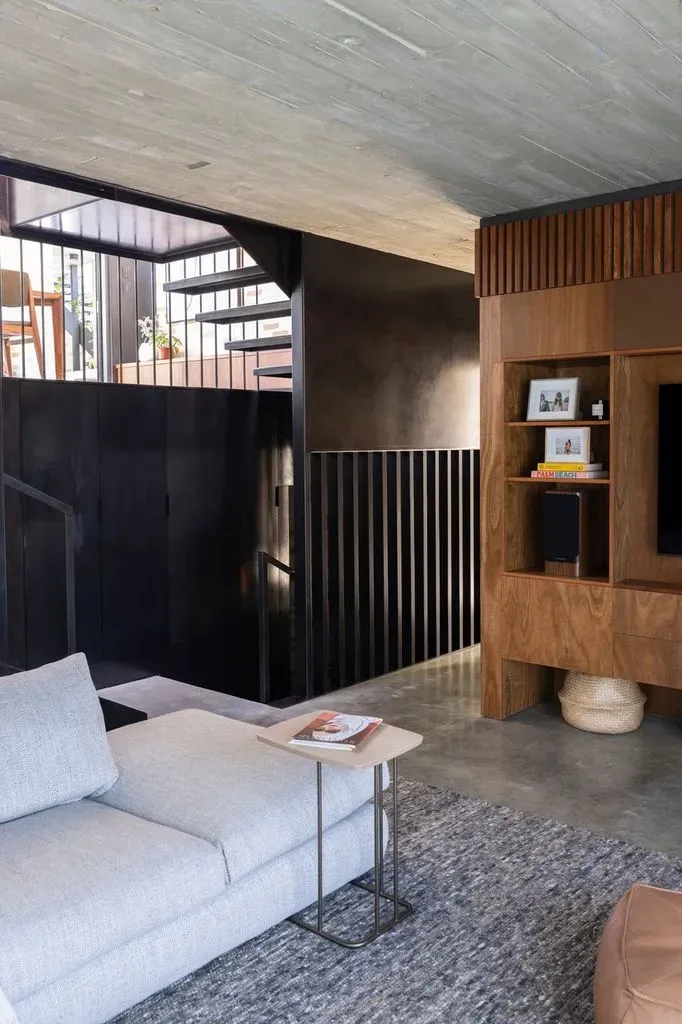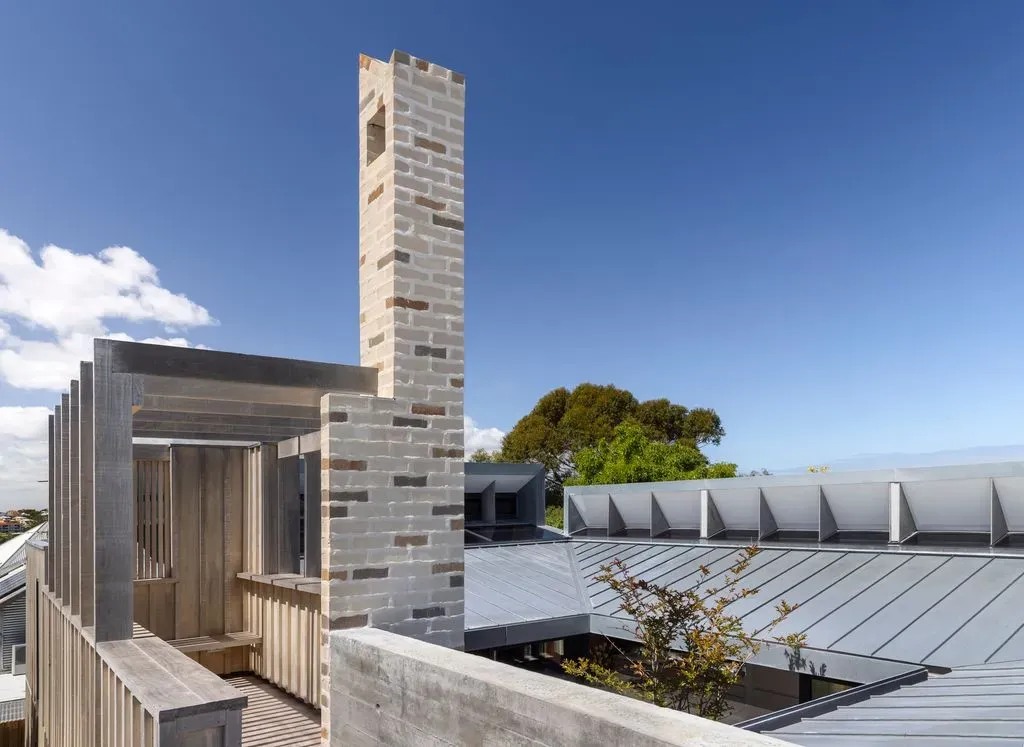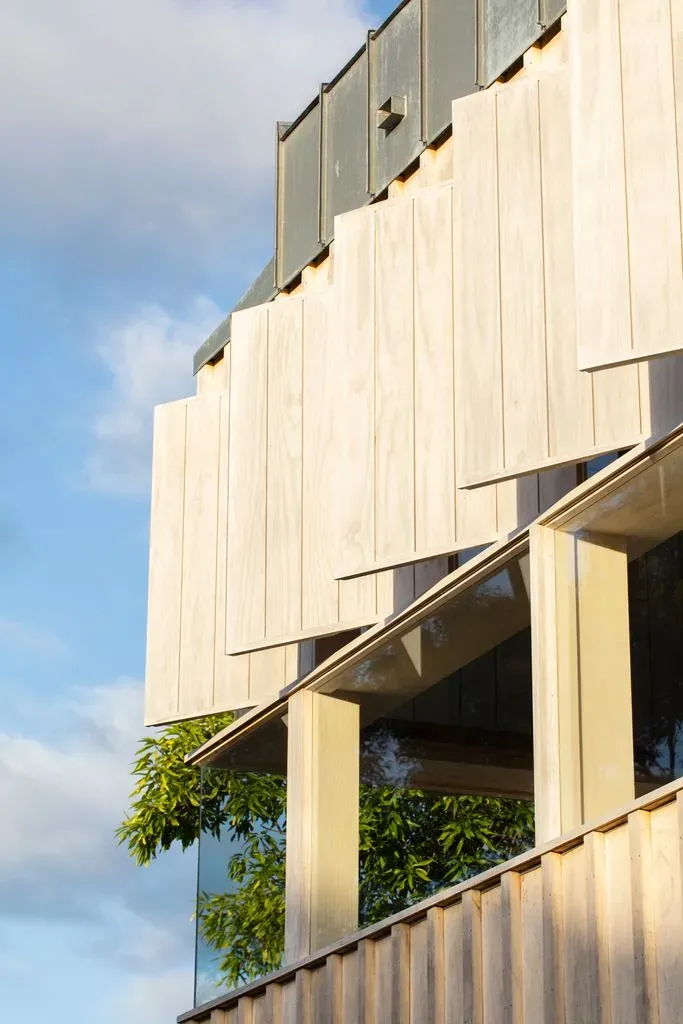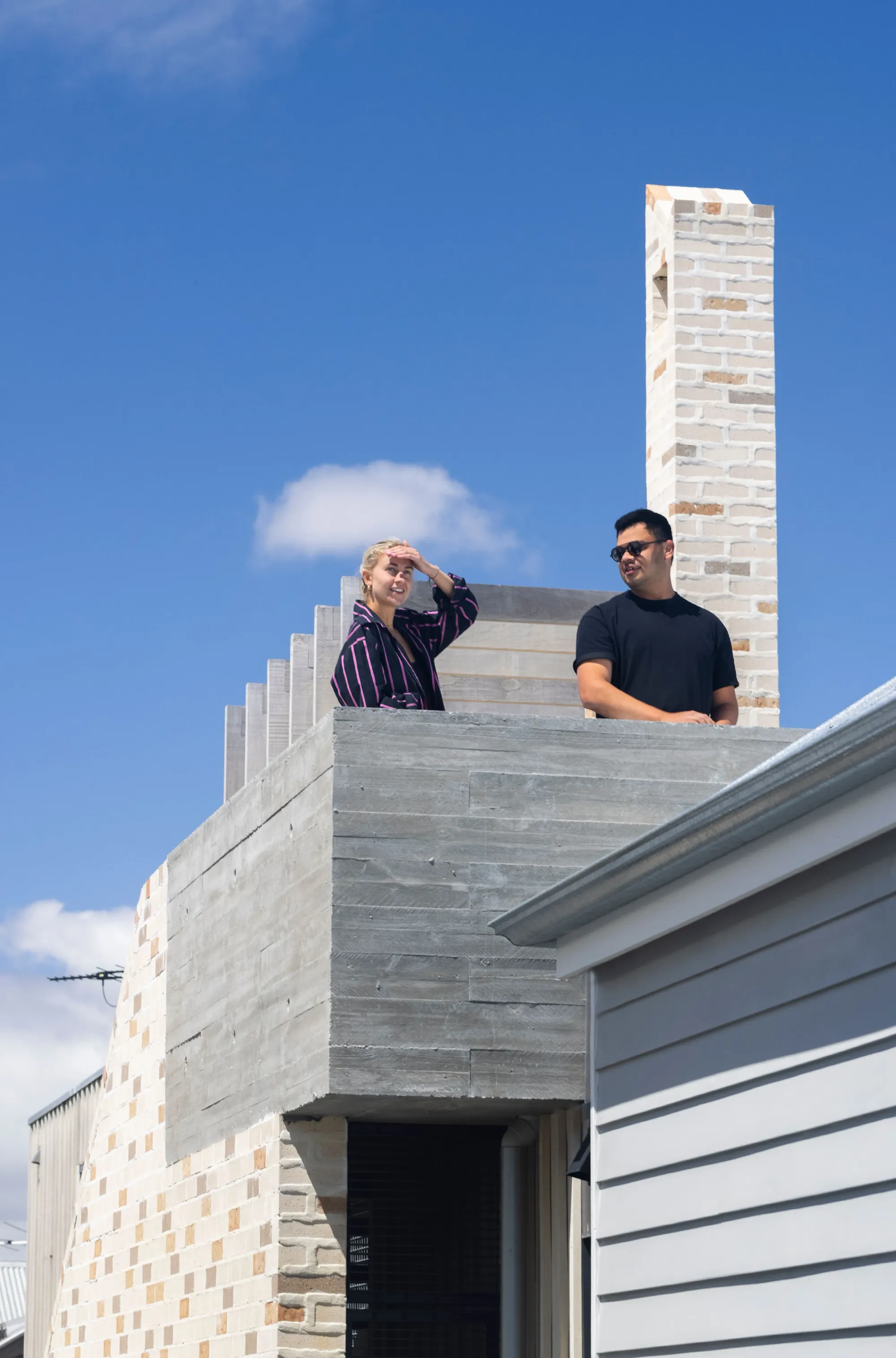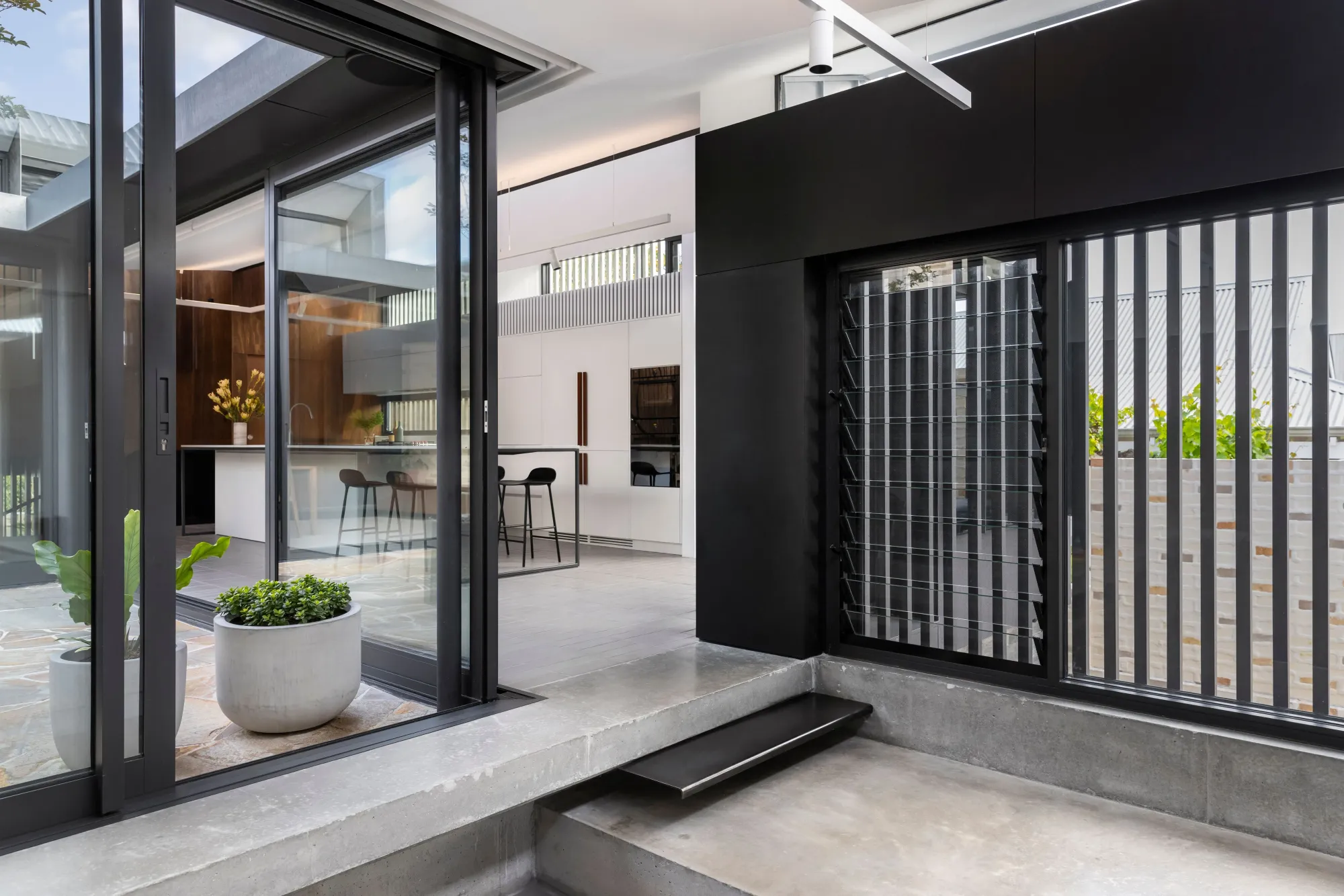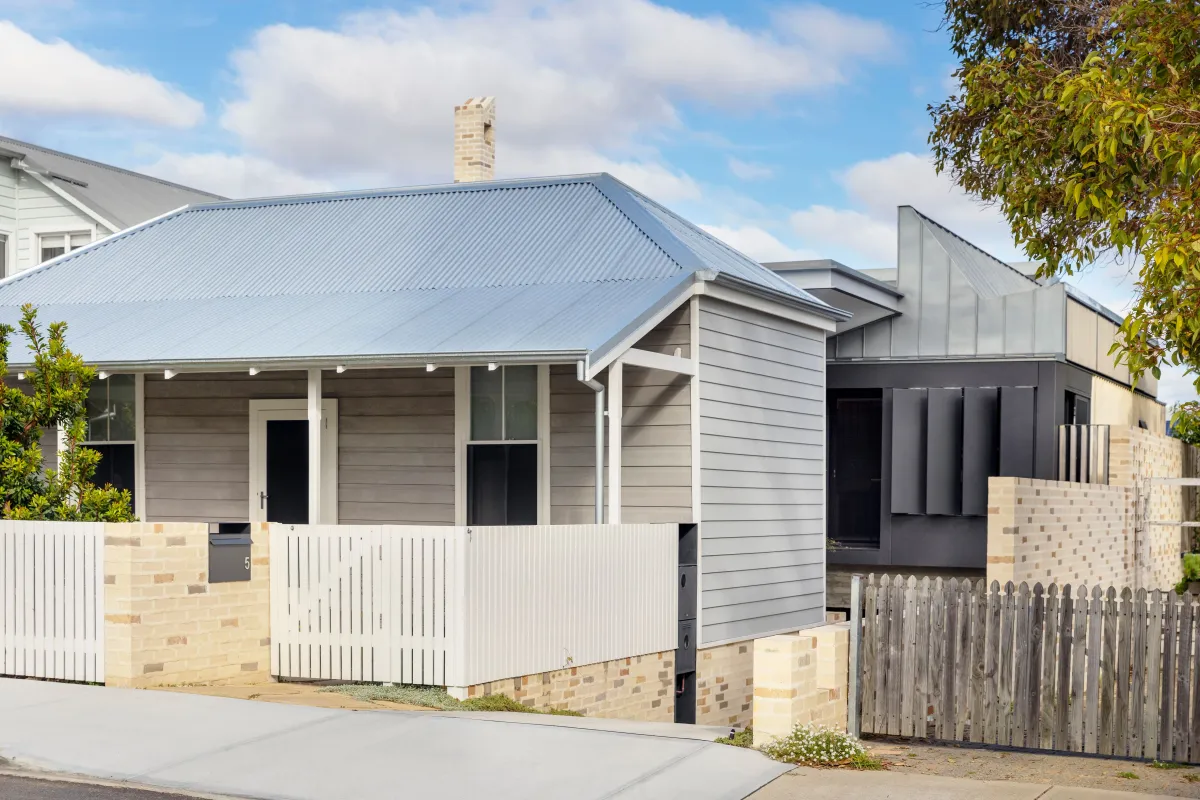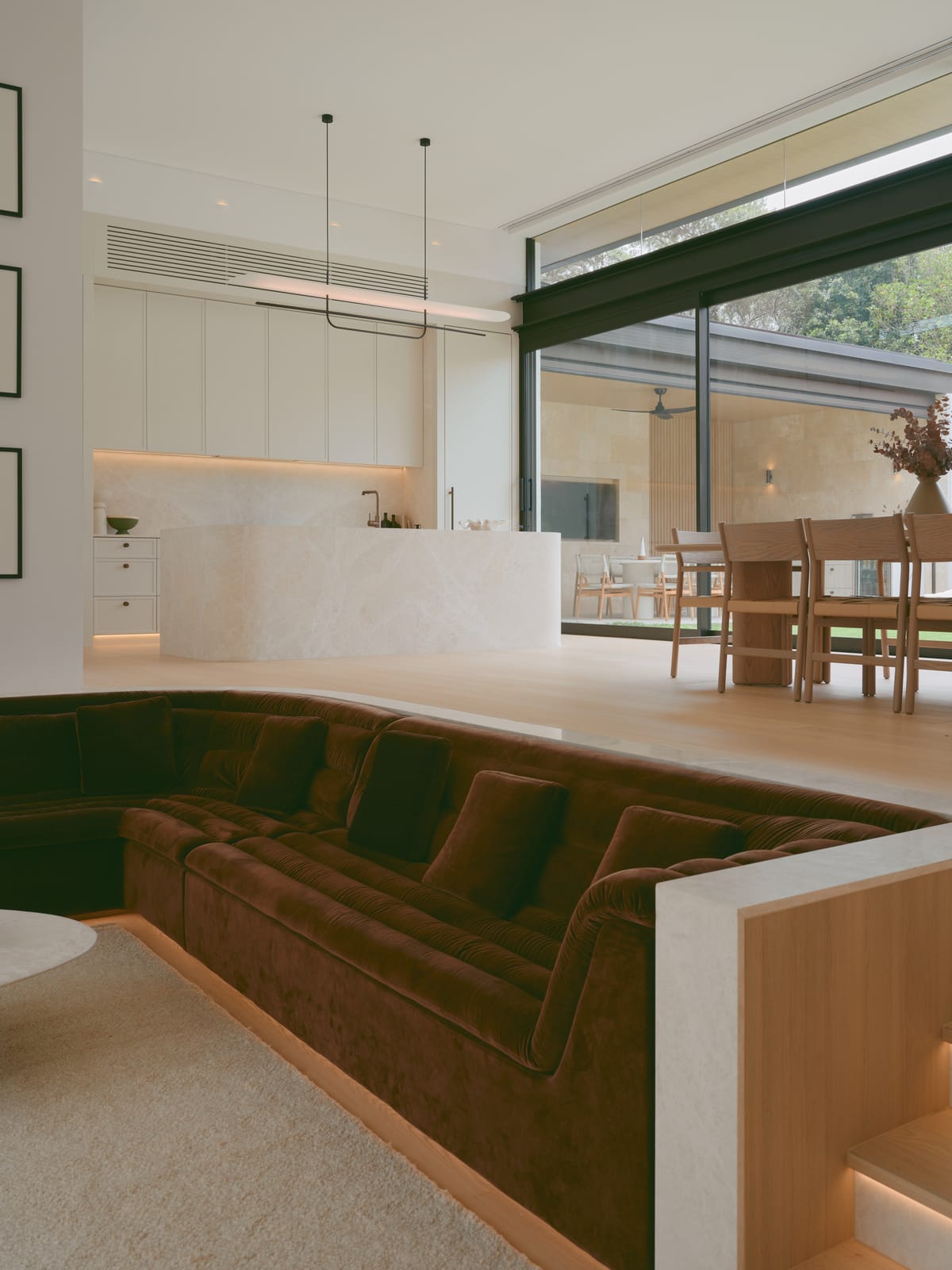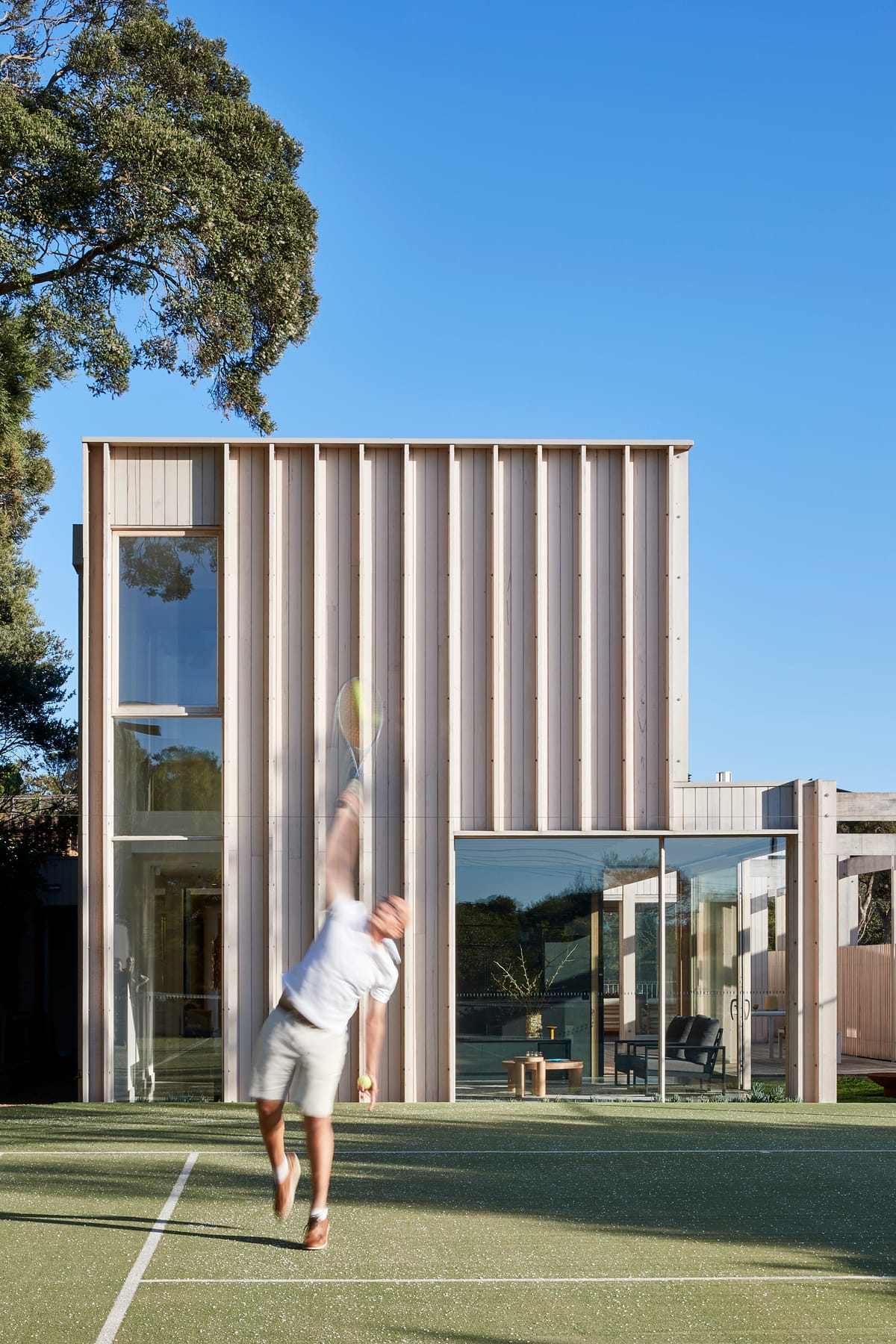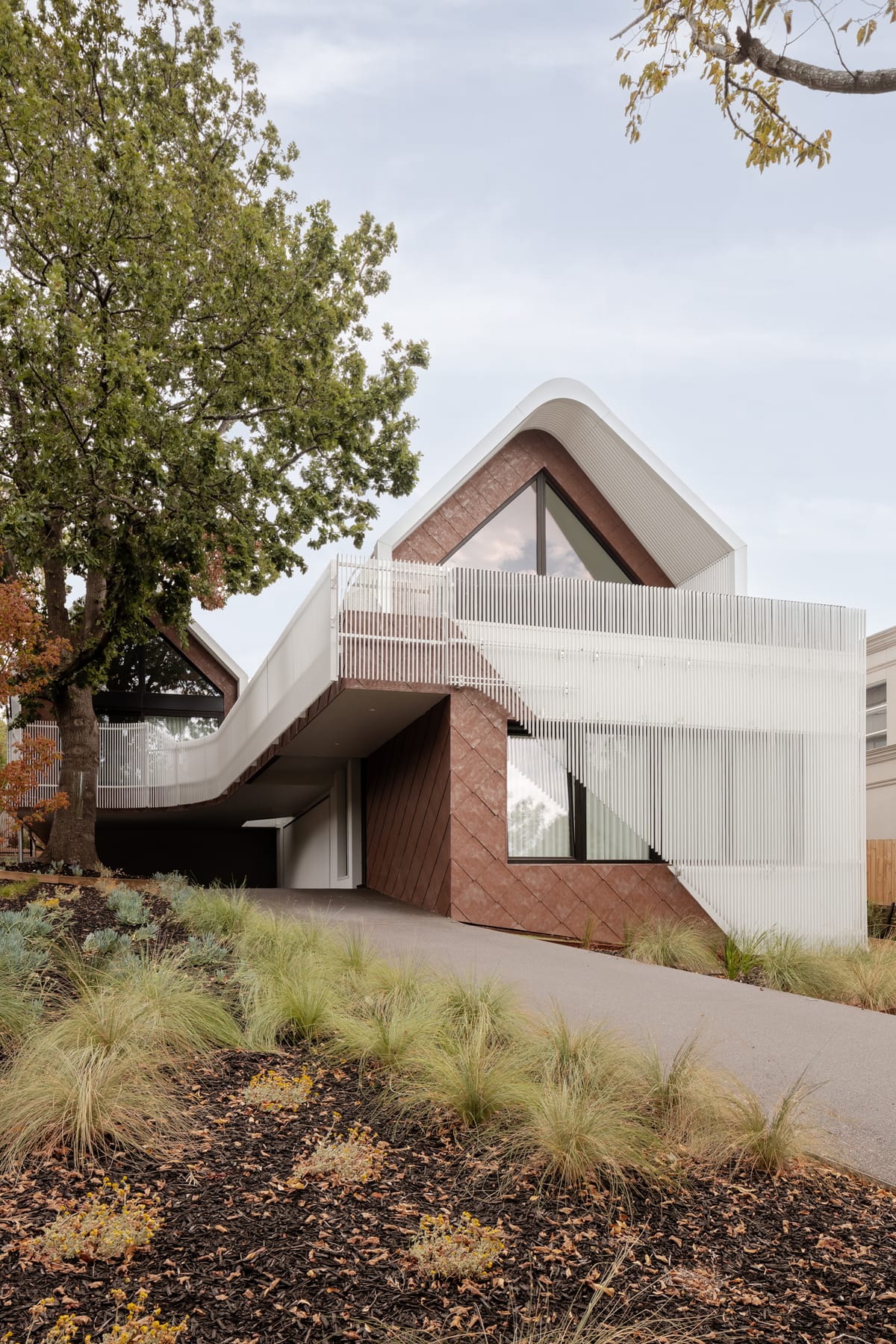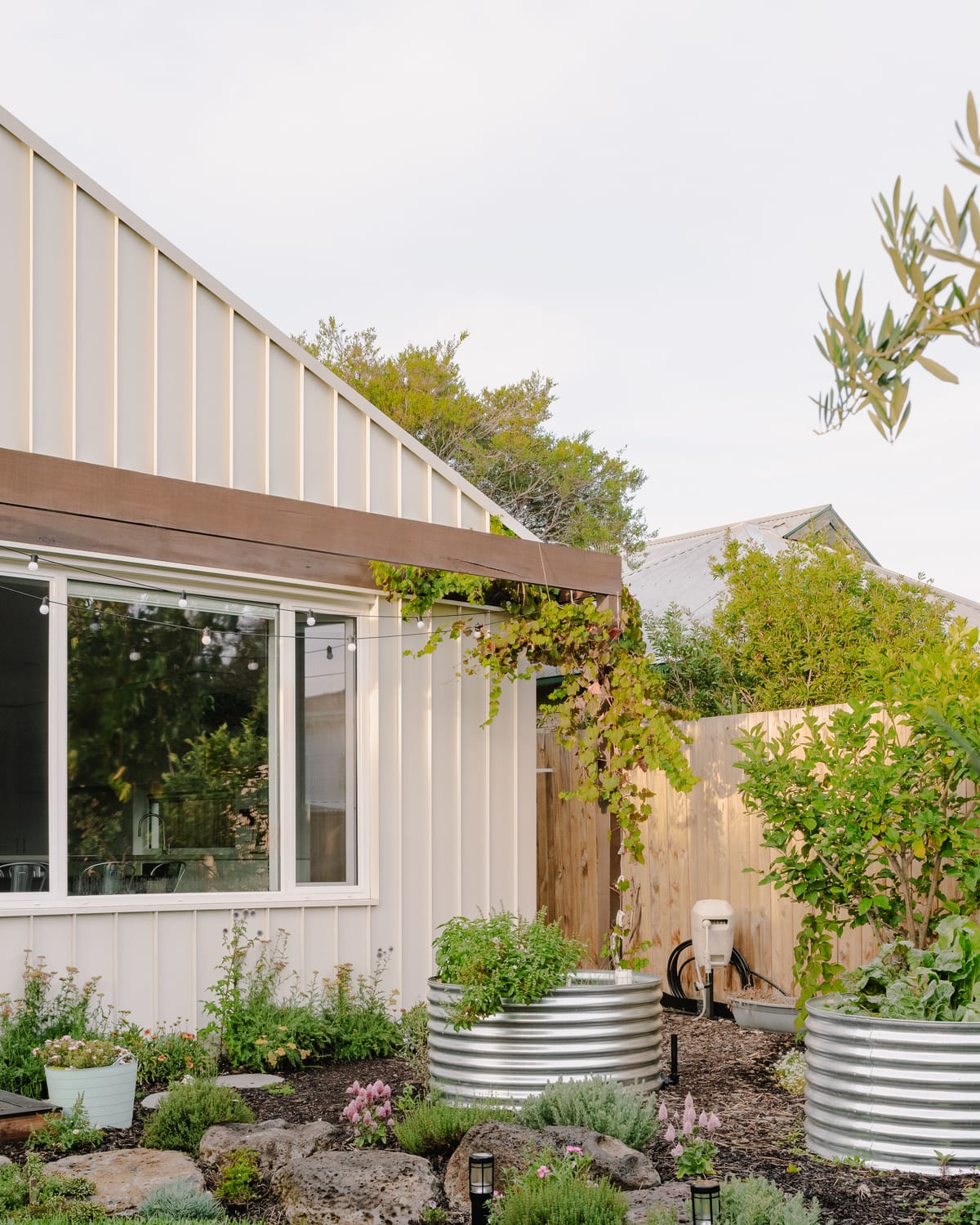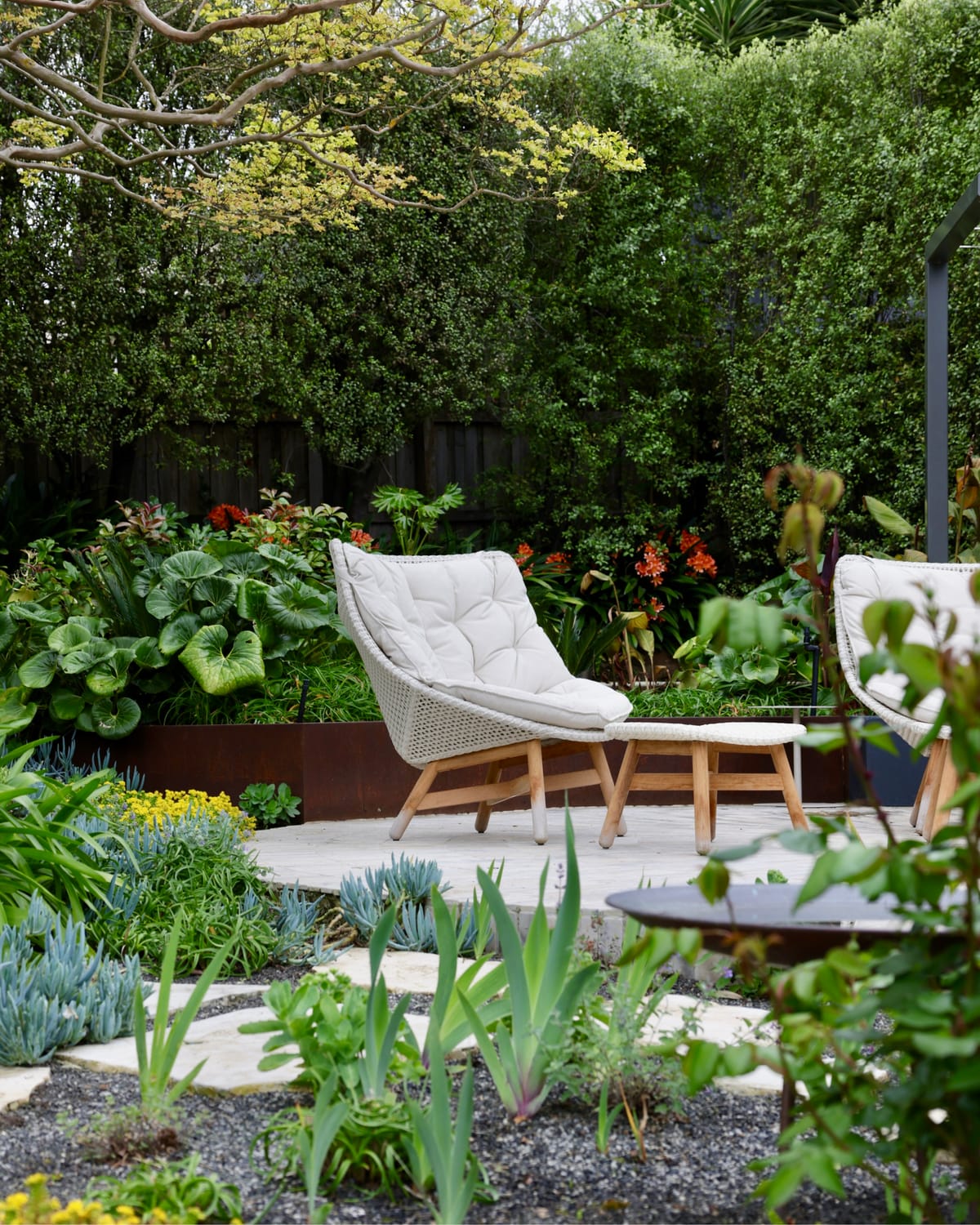Words by Jonathan Speer. Photography by Bo Wong. This story was originally published in The Architect magazine, an official publication of the Australian Institute of Architects.
The clients, Kristen and Paul, had lived in the original two-room worker’s cottage for several years prior to embarking on the renovation and addition project. Having created strong bonds with their community, they knew this was where they wanted to raise a family. So, they engaged Philip to provide them with a beautiful addition to their home.
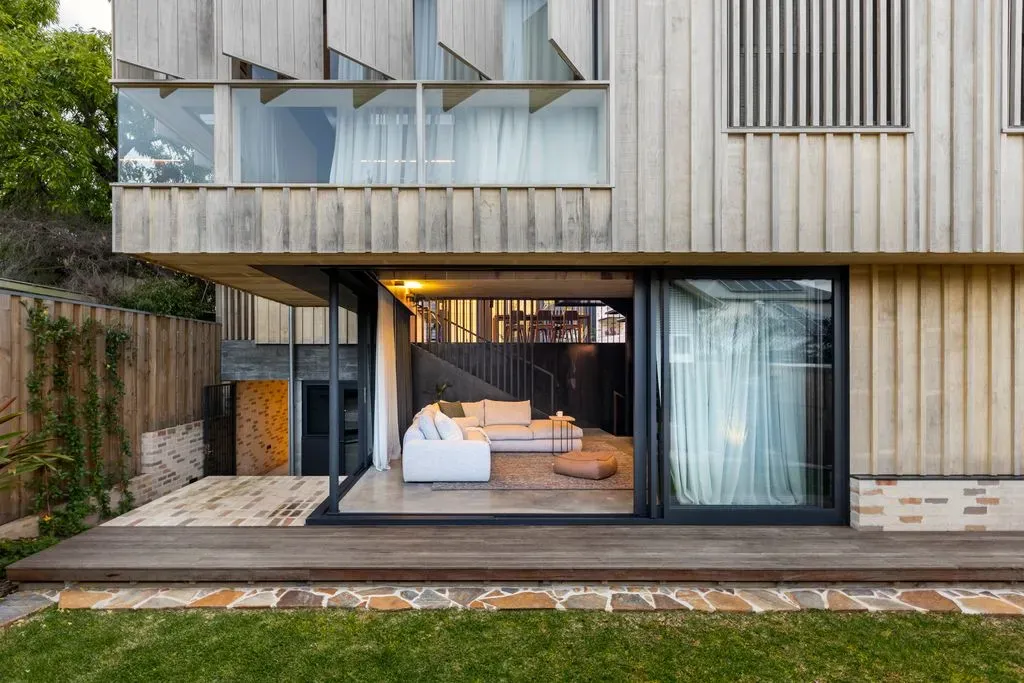
Sited on Wadjuk land, within a heritage area of North Fremantle, the original 1920s cottage was constructed on a 427 sqm block, which falls three metres from front to back.
As the 1920s cottage was built long before cars were a consideration, they decided to create a new garage space as part of the rear addition. With the fall of the site not quite sufficient to accommodate this, a step up in section from the cottage floor level to the addition was required. The resulting transitional area is described by Philip as “a blurry space”–with a bathroom, storage, playroom and places to sit.
Philip thought it “felt natural” to split the levels of the home and shift the living, dining and kitchen spaces horizontally toward the rear of the site. “We knew we had to carve out space in the middle to take advantage of the north light,” says Philip. This became a means of providing a middle ground, where the occupants can look within to the serenity of the central courtyard, with its crepe myrtle.
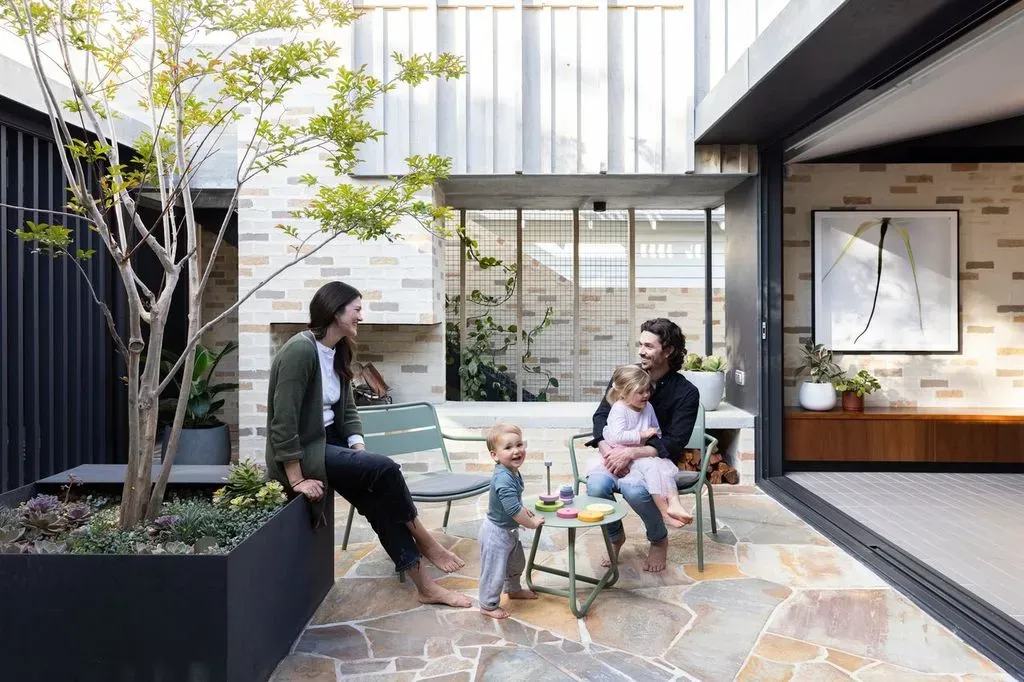
Beyond the central courtyard living areas, there is another step up in section to there spite of the master bedroom suite. The level below this bedroom contains the living room which is connected to the backyard.
These shifting levels and their relationship to one another are beautifully handled in the interior spaces. Batten walls provide visual and spatial connection across the delineating stair voids knitting spaces together internally, while high-level ribbon windows and operable screens curate privacy and views to the street, the sky and the neighbourhood.
Kristen and Paul had a clear notion of the materials they wanted to use to invoke richness and texture. Below ground, the dominant materials are rammed and off-form concrete, while above ground it’s brick. Custom bricks were used with a special jointing technique, where the mortar sits proud of the wall. This means the bricks are read less in terms of the module and more as a unifying texture.
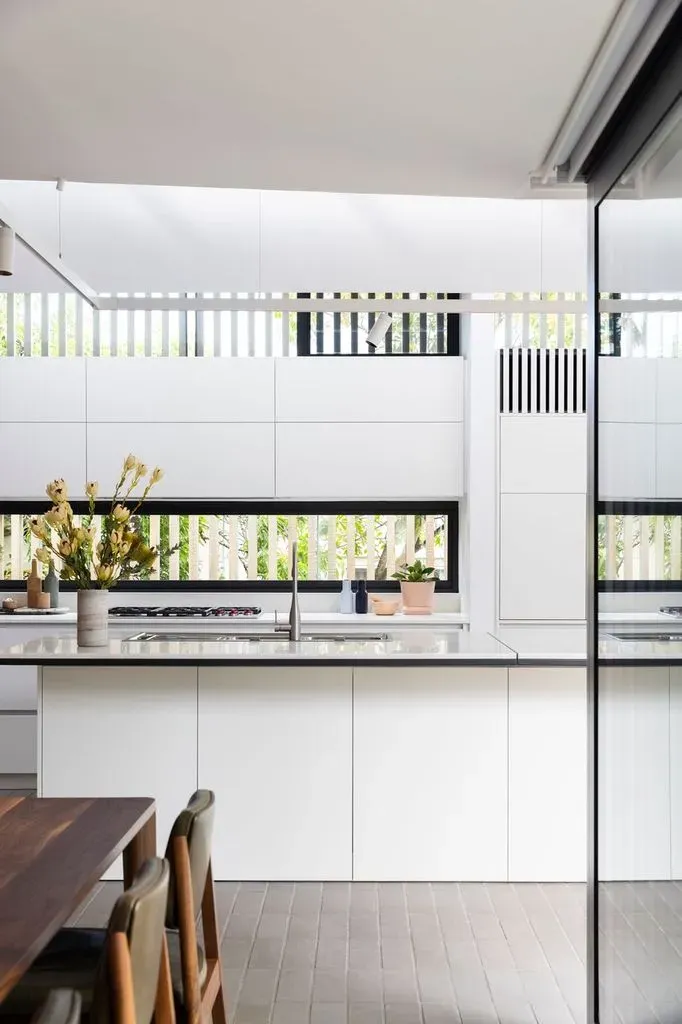
Other hardy materials used externally include fibre-cement cladding, high-performance modified wood and the standing seam zinc roof of the central courtyard. The courtyard roof serves as the fifth elevation when viewed from the crow’s nest district lookout above.
Higham Road House works well passively, with its carefully considered materials and orientation, and its array of shutters and batten screens which admit northern sun in winter to capture heat in the thermal mass, while repelling the hot sun in summer. These passive approaches and cross ventilation are supplemented in summer with three highly efficient independent high-volume dual-fan condensers and underfloor hydronic heating in winter.
For anyone puzzling over the merits of appointing an architect to design their home, the award-winning Higham Road House by Philip Stejskal Architecture may well provide the answer.
